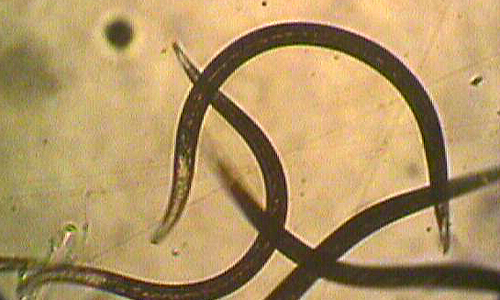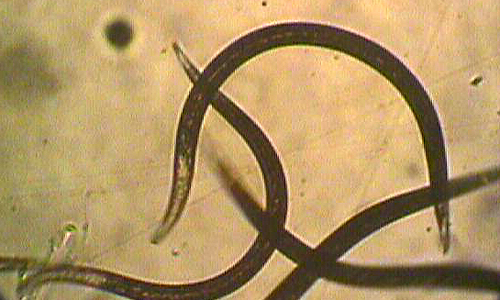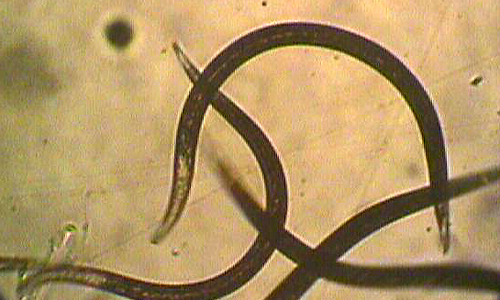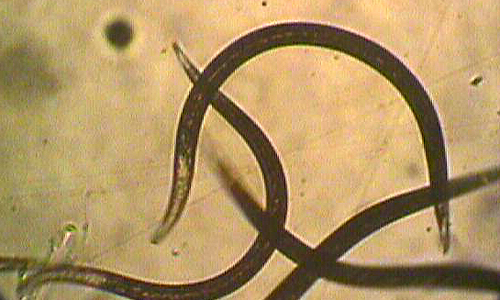Sod webworms
Importance of sod webworms
Sod webworms are one of the most damaging pests of turfgrass. Sod worms cause a serious damage to all the types of turfgrasses that are grown in the athletic fields, golf courses, home lawns and recreational parks. The irregular brown patches of dead grass caused by feeding by sod webworm can reduce the aesthetic value of turfgrass that grown in above stated sites.
Facts (show all)
- Taxonomy and list of the most economically devastating species of sod webworms
-
- Common names: Sod webworms or tropical sod webworms
- Scientific names: Sod webworm, Crambus lathoniellus and tropical sod webworm, Herpetogramma phaeopteralis
- Kingdom: Animalia
- Phylum: Arthropoda
- Class: Insecta
- Order: Lepidoptera
- Family: Crambidae
- Subfamily: Crambinae
- Genus: Crambus
- Species: Crambus lathoniellus and Herpetogramma phaeopteralis
- Identification of sod webworms
-
Adults: Adult moths of sod worms are light, brown or dull ash gray in color with snout-like mouthparts.
Eggs: Eggs are creamy or white in color, oval shaped and about 0.3 to 0.5 mm long
Larvae:The full grown larvae/caterpillars of sod webworms are gray, brown or greenish in color, about 1 inch long with four parallel rows of distinct dark spots along the length of their body and coarse hair distributed all over the body.
Pupae: Sod webworm larvae pupate in silken cocoons. Pupae are yellow to brown in color and about 8-10 mm long.
- Biology of Sod webworm
-
Sod webworms develop through four different stages including egg, caterpillar/larva, pupa and adult moth. Sod webworms overwinter as caterpillar in silk-lined tunnels prepared in thatch and/or soil. In the spring, overwintering caterpillars resume feeding on new turfgrass growth, while feeding molts (shed its cuticle) 5-9 times and go through 6-10 stages (instars) of development. Last instar larva pupates inside the cocoons built from soil particles and plant debris in May through June. After 10-15 days of pupation, adult moths emerge from pupae and begin mating. After mating, female moths lay eggs individually while they are flying and dropping them randomly into the grass. A female moth of sod webworms can lay up to 500 eggs during its lifespan of 10 to 15 days. Under optimal environmental temperatures, eggs hatch within 7-15 days. After hatching from egg, larval stage starts immediately feeding on grass foliage. These second generation caterpillars of sod webworms feed through September then overwinter and life cycle continues.
- What type of damage is caused by sod webworms?
-
All the stages of sod webworm caterpillars feed on a variety of grasses or other host plants. Adult moths do not cause any type of damage to any grass species. Caterpillars generally chew leaves and stems at the crown of turfgrass causing thinning of grass in small areas. As the infestation progresses, these damaged small areas turn into large brown patches. When infestation of sod webworms is very high, the damage caused by them is easily noticed as large and irregular brown patches are seen throughout lawns or golf course. Caterpillars of sod webworm generally feed during night- time but hide in the silk-lined tunnels prepared by them in thatch and/or soil during day- time. The presence of irregular brown patches of dead grass caused by feeding of sod webworm in the middle of a lawn or golf course can reduce its aesthetic value.
- Biological control of sod webworms
-
Insect pathogenic bacteria Bacillus thuringiensis (a bacterium which produces a toxin and paralyzes the gut of the caterpillar) and entomopathogenic nematodes (beneficial nematodes) have a potential to use as biological control agents to control sod webworms. Beneficial nematodes can kill sod webworm caterpillar with 48 hours after application. They are commercially available and easy to apply. Since beneficial nematodes are not harmful to children, dogs, cats, and honeybees, they do not need a special permission to apply because EPA exempts them. Two species of beneficial entomopathogenic nematodes including Heterorhabditis bacteriophora and Steinernema carpocapsae and can be applied at the rate of 1 billion nematodes per acre in the soil to target caterpillars and pupae and reduce the emergence of next generation sod webworm moths. Insect pathogenic bacteria called Bacillus thuringiensis when ingested by sod webworm caterpillars it produces a toxin that paralyzes and kills the caterpillars
- Parasitic beneficial entomopathogenic nematodes are effective against sod webworms
-
- Heterorhabditis bacteriophora
- Steinernema carpocapsae
- Research Papers
-
Grewal, P.S. Koppenhofer, A.M. and Choo, H.Y. 2005. Lawn, turfgrass and pasture applications. In: Nematodes As Biocontrol Agents. Grewal, P.S. Ehlers, R.-U., Shapiro-Ilan, D. (eds.). CAB publishing, CAB International, Oxon. Pp 115-146.
Tofangsazi, N., Cherry, R.H. and Arthurs, S.P. 2014. Efficacy of commercial formulations of entomopathogenic nematodes against tropical sod webworm, Herpetogramma phaeopteralis (Lepidoptera: Crambidae). Journal of Applied Entomology. Online publication Pages 1-6.






